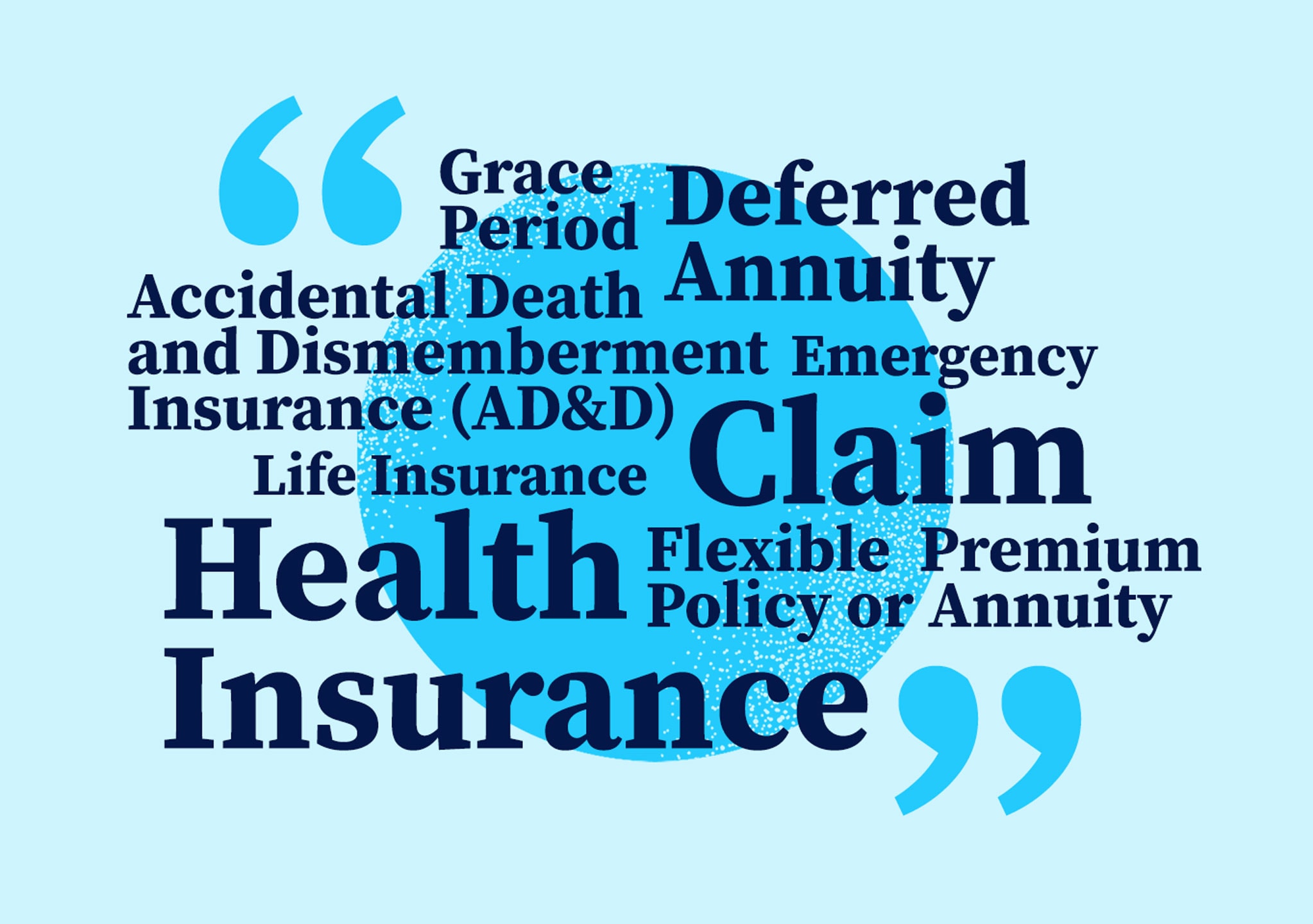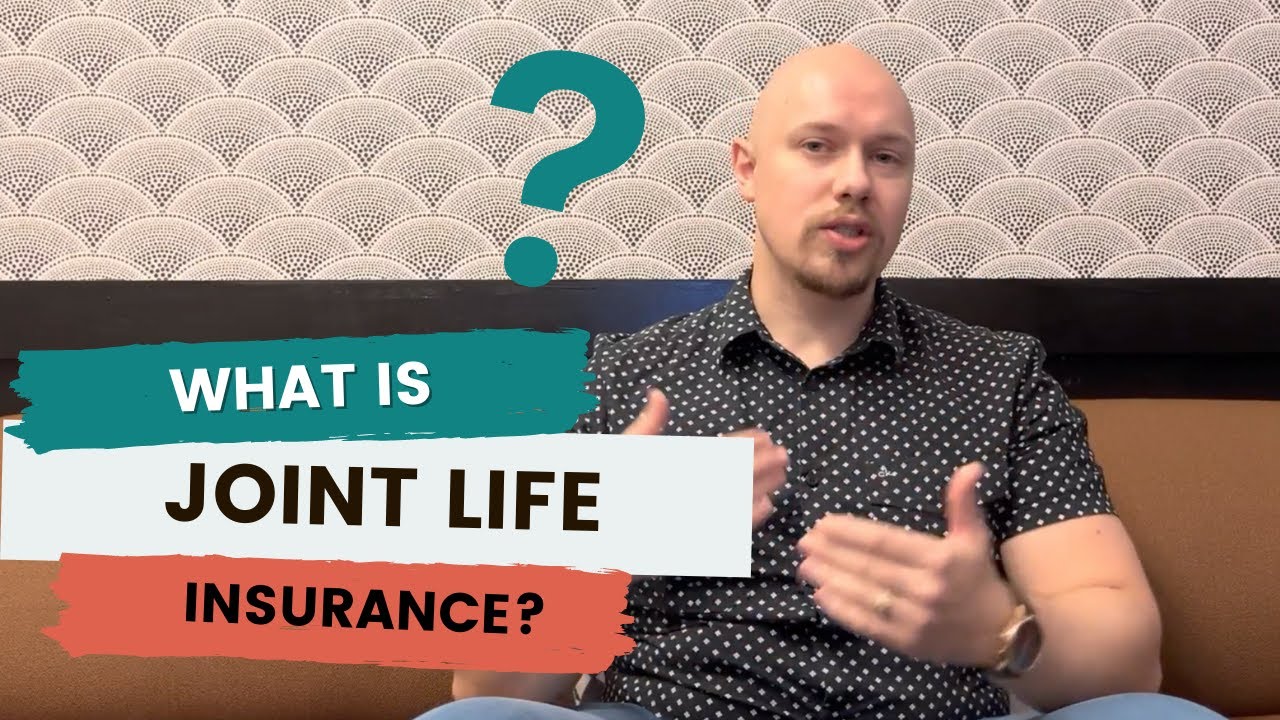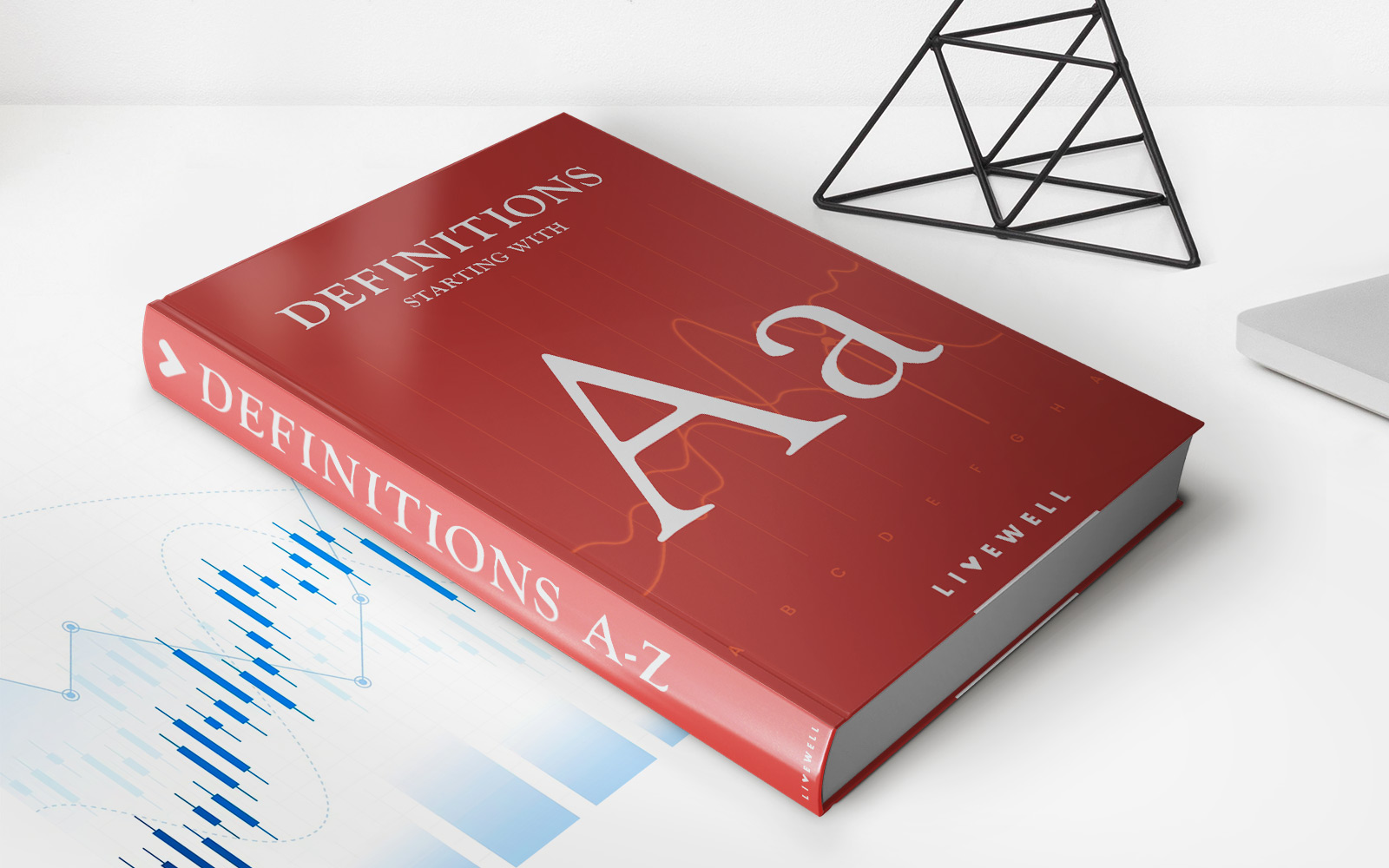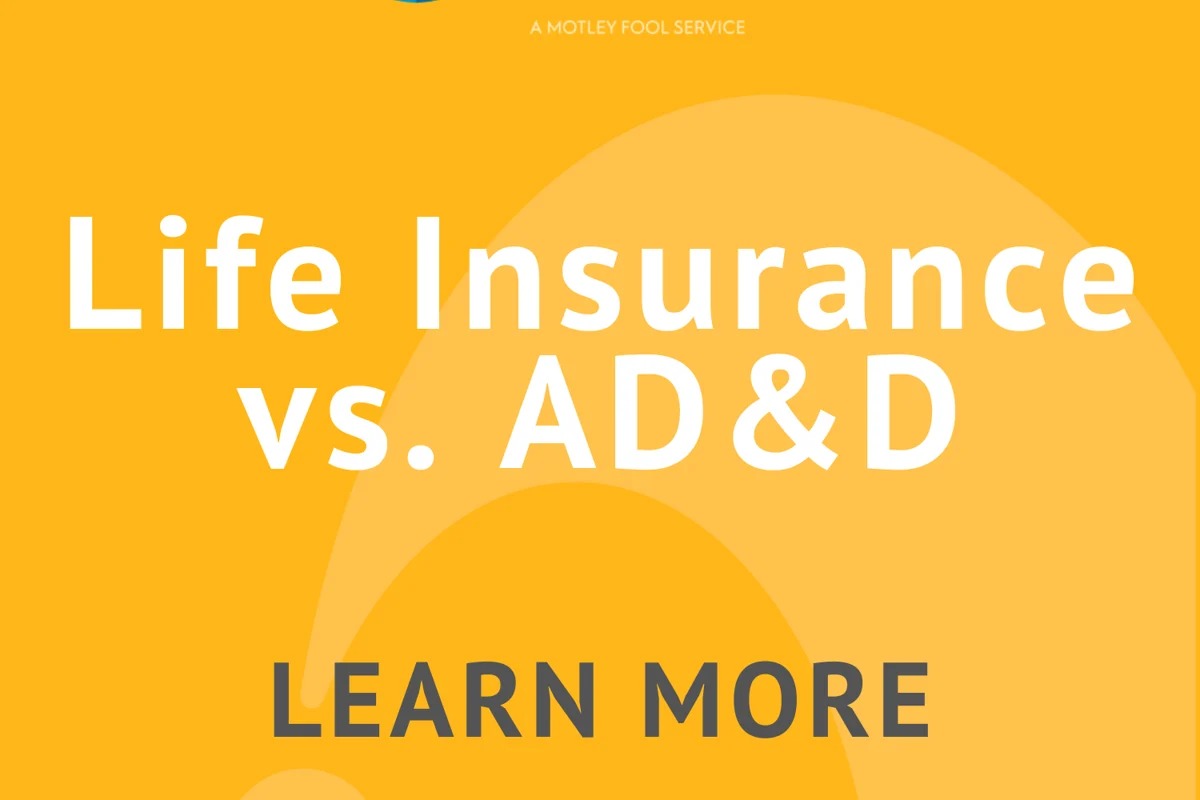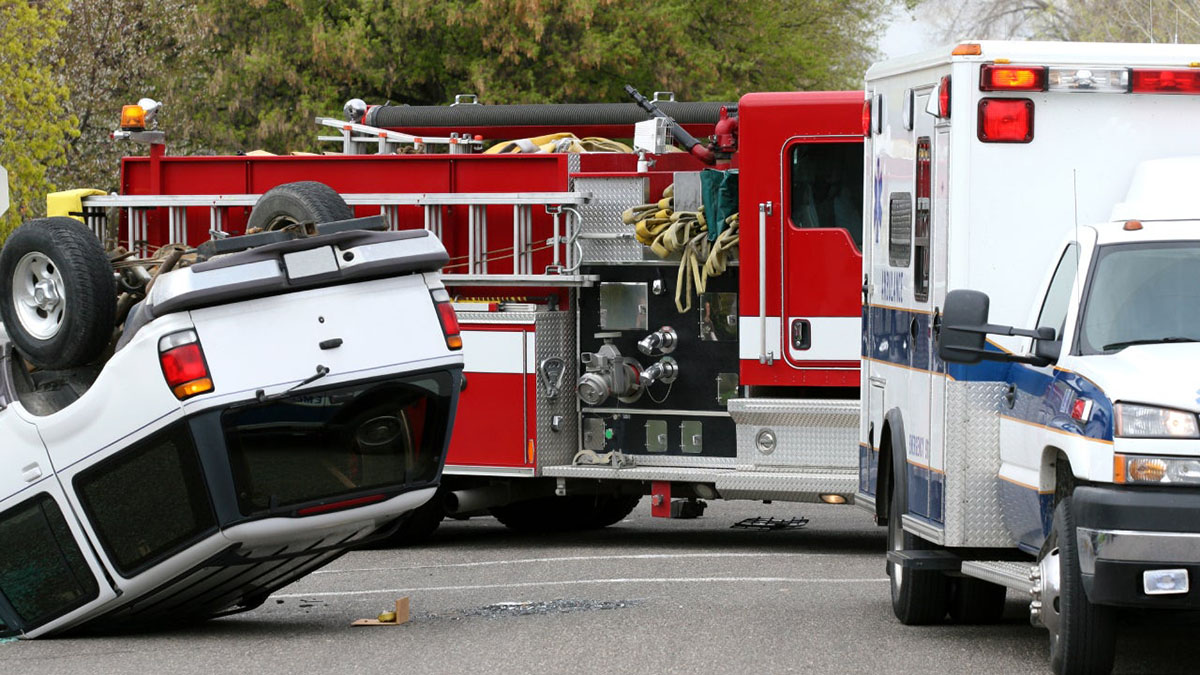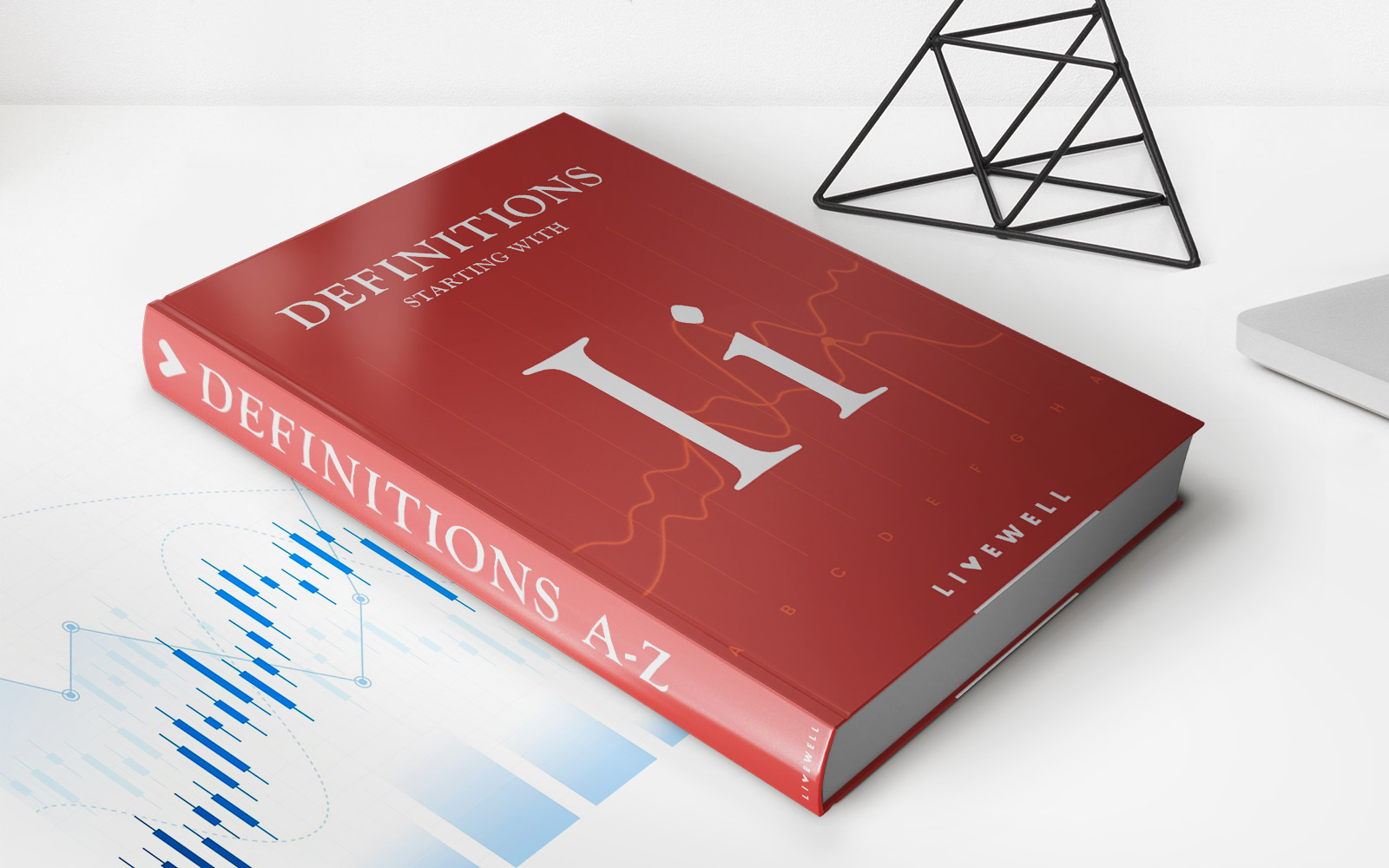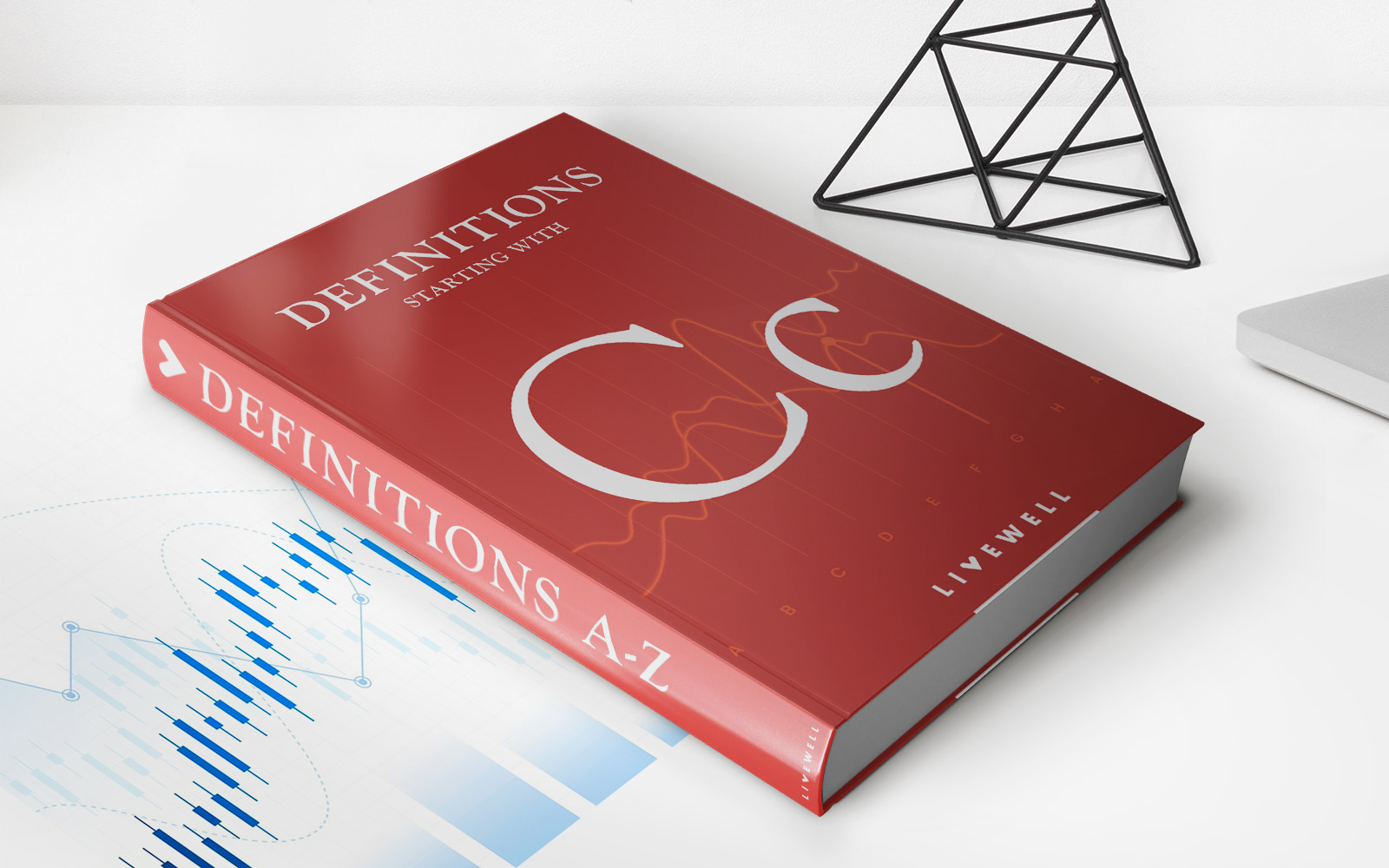Home>Finance>What Is Accidental Death Insurance Vs. Life Insurance?


Finance
What Is Accidental Death Insurance Vs. Life Insurance?
Published: November 20, 2023
Learn the difference between accidental death insurance and life insurance in the world of finance. Understand the benefits and coverage of each to make an informed decision for your financial future.
(Many of the links in this article redirect to a specific reviewed product. Your purchase of these products through affiliate links helps to generate commission for LiveWell, at no extra cost. Learn more)
Table of Contents
- Introduction:
- Understanding Accidental Death Insurance:
- Understanding Life Insurance:
- Key Differences Between Accidental Death Insurance and Life Insurance:
- Coverage and Benefits of Accidental Death Insurance:
- Coverage and Benefits of Life Insurance:
- Factors to Consider When Choosing Between Accidental Death Insurance and Life Insurance:
- Conclusion:
Introduction:
Financial planning is a crucial aspect of everyone’s life. Whether it’s protecting your loved ones financially or ensuring financial security for yourself, insurance plays a vital role. Two common types of insurance that often come up in discussions are accidental death insurance and life insurance. While both serve the purpose of providing financial protection, they differ in terms of coverage and benefits.
In this article, we’ll delve into the differences between accidental death insurance and life insurance to help you understand which option is best suited for your needs. We’ll explore the various aspects of each type of insurance, the coverage and benefits they offer, and the factors to consider when choosing between them.
Accidental death insurance, as the name suggests, provides coverage in the event of an accidental death. This type of insurance typically pays out a lump-sum benefit to the beneficiaries if the policyholder dies due to a qualified accident. On the other hand, life insurance offers coverage in the event of any cause of death, whether accidental or natural.
Understanding the key differences between these two types of insurance can help you make an informed decision when it comes to protecting yourself or your loved ones financially. Let’s dive deeper into the specifics of each type of insurance and their respective coverage and benefits.
Understanding Accidental Death Insurance:
Accidental death insurance is a type of insurance policy that provides coverage specifically for accidental deaths. It is designed to protect individuals and their families from the financial impact of an unexpected accidental death.
Accidental death insurance policies typically pay out a lump-sum benefit to the designated beneficiaries if the insured person dies as a result of a qualified accident. Qualified accidents may include but are not limited to car accidents, falls, drowning, fires, or other unforeseen events.
Unlike life insurance, accidental death insurance only covers deaths caused by accidents. It does not provide coverage for deaths resulting from natural causes, such as illness or old age. This makes accidental death insurance a more specific and focused type of coverage.
One of the key advantages of accidental death insurance is that it is generally more affordable than traditional life insurance policies. Since accidental deaths are less common than deaths from natural causes, the premiums for accidental death insurance policies tend to be lower.
Accidental death insurance can provide financial protection by helping to cover expenses such as funeral costs, medical bills, outstanding debts, and daily living expenses that may arise following an accidental death.
However, it’s important to note that accidental death insurance does not provide the comprehensive coverage that life insurance offers. It is specifically designed to address the financial ramifications of accidental deaths and may not provide as much coverage or as wide a range of benefits as a life insurance policy.
When considering accidental death insurance, it’s crucial to carefully review the terms and conditions of the policy. Some policies may have specific exclusions and limitations, such as excluding certain high-risk activities or limiting coverage for certain types of accidents.
Understanding the coverage and limitations of accidental death insurance is essential to ensure that you have the appropriate financial protection in place for yourself and your loved ones in the event of an unexpected accidental death.
Understanding Life Insurance:
Life insurance is a type of insurance policy that provides financial protection to beneficiaries in the event of the insured person’s death. It is designed to offer peace of mind and security by ensuring that loved ones are financially supported even after the policyholder’s passing.
Life insurance policies typically pay out a designated sum of money, known as the death benefit, to the beneficiaries upon the death of the insured person. This death benefit can be used to replace the policyholder’s income, cover funeral expenses, pay off debts, or provide financial support for dependents.
Unlike accidental death insurance, life insurance provides coverage for deaths resulting from any cause, whether it be accidental or due to natural causes such as illness or old age. This makes life insurance a more comprehensive form of coverage that protects against a wider range of risks.
Life insurance policies come in different forms, such as term life insurance and permanent life insurance. Term life insurance provides coverage for a specific period, typically 10 to 30 years, while permanent life insurance offers coverage for the entire lifetime of the insured person.
One of the key benefits of life insurance is the ability to accumulate a cash value over time in permanent life insurance policies. This cash value grows tax-deferred and can be accessed by the policyholder during their lifetime through policy loans or withdrawals.
Life insurance policies offer flexibility in terms of choosing the coverage amount and the length of the policy. The coverage amount should be carefully determined based on factors such as income replacement needs, outstanding debts, and future financial obligations.
When considering life insurance, it is essential to review and compare different policies to find the most suitable option for your needs. Factors to consider include the reputation and financial stability of the insurance company, the premiums and payment options, and any additional features or riders that may be available.
Life insurance provides a valuable safety net for your loved ones, ensuring that they will be financially protected in the event of your death. It offers peace of mind, knowing that your family will have the necessary financial resources to maintain their quality of life and meet their future needs.
Key Differences Between Accidental Death Insurance and Life Insurance:
Accidental death insurance and life insurance are two distinct types of insurance policies that offer different forms of financial protection. Understanding the key differences between them can help you determine which option is best suited to your individual needs. Here are some of the main differences:
- Coverage: The primary difference between accidental death insurance and life insurance lies in their coverage. Accidental death insurance specifically covers deaths resulting from accidents, such as car accidents, falls, or fires. On the other hand, life insurance provides coverage for deaths due to any cause, including accidents, illnesses, or old age. Life insurance offers more comprehensive protection, encompassing a wider range of risks.
- Premiums: Accidental death insurance policies generally have lower premiums compared to life insurance policies. This is because accidental deaths are relatively rare compared to deaths from natural causes. Life insurance premiums are typically higher due to the broader coverage and the increased likelihood of a payout.
- Duration of Coverage: Accidental death insurance usually provides coverage for a specific period, known as term coverage, similar to term life insurance. It typically lasts for a specific number of years or until a certain age. Conversely, life insurance comes in both term and permanent options. Term life insurance provides coverage for a specific period, while permanent life insurance offers lifetime coverage.
- Benefit Payout: Accidental death insurance pays out a lump-sum benefit to the beneficiaries if the death is classified as a qualified accident. The payout is typically made in full upon death. Life insurance policies also pay out a death benefit to beneficiaries, but the payout may be spread over several years or offered as a monthly income, depending on the policy’s terms.
- Additional Benefits: Life insurance often comes with additional benefits that can enhance the policyholder’s coverage. These may include cash value accumulation, which allows the policyholder to borrow against the policy or receive a surrender value, as well as the option to add riders for specific coverage needs, such as critical illness or disability. Accidental death insurance typically does not offer these additional benefits.
It’s important to carefully assess your financial needs and consider factors such as budget, coverage requirements, and future goals when deciding between accidental death insurance and life insurance. Evaluating the differences in coverage, premiums, duration, benefit payout, and additional benefits can help you make an informed decision and choose the insurance option that best aligns with your specific circumstances.
Coverage and Benefits of Accidental Death Insurance:
Accidental death insurance provides coverage specifically for deaths resulting from accidents. Here are some key aspects of the coverage and benefits offered by accidental death insurance:
- Accidental Death Coverage: Accidental death insurance pays out a lump-sum benefit to the designated beneficiaries if the insured person dies as a result of a qualified accident. Qualified accidents may include car accidents, falls, drowning, fires, or other unforeseen events. The policy specifies the specific types of accidents covered.
- No Medical Examination: Accidental death insurance policies often do not require a medical examination for the applicant. This can make it a more accessible option for individuals who may have difficulty obtaining traditional life insurance due to health conditions or other factors.
- Financial Protection: Accidental death insurance provides a financial safety net for the insured person’s beneficiaries. The lump-sum benefit can be used to cover expenses such as funeral costs, medical bills, outstanding debts, and daily living expenses that may arise following an accidental death. It helps ease the financial burden on surviving family members during a difficult time.
- Lower Premiums: Accidental death insurance policies generally have lower premiums compared to life insurance policies. Since accidental deaths are less common than deaths from natural causes, the risk for the insurance provider is lower. This often results in more affordable premiums.
- Additional Riders: Some accidental death insurance policies may offer optional riders that can be added to the base policy for additional coverage. These riders can include benefits such as dismemberment coverage, which provides a benefit in case of the loss of a limb or sight due to an accident.
It’s important to carefully review the terms and conditions of the accidental death insurance policy to fully understand the coverage and any exclusions or limitations. Certain high-risk activities, such as extreme sports or occupations, may not be covered by the policy. Additionally, accidental death insurance policies typically do not provide coverage for deaths resulting from natural causes or illnesses.
Accidental death insurance can be a valuable form of coverage for individuals looking for affordable protection against accidental deaths. It offers financial security and peace of mind, knowing that loved ones will be taken care of in the event of a tragic accident.
Coverage and Benefits of Life Insurance:
Life insurance provides comprehensive coverage and financial protection for policyholders and their beneficiaries. Here are some key aspects of the coverage and benefits offered by life insurance:
- Death Benefit: The main benefit of life insurance is the death benefit, which is the payout made to the designated beneficiaries upon the death of the insured person. The death benefit can be a lump sum or distributed as regular payments, depending on the policy terms.
- Flexible Coverage Options: Life insurance policies offer flexibility when it comes to the coverage amount and duration. Policyholders can choose the coverage amount based on their financial needs, taking into consideration factors such as income replacement, outstanding debts, mortgage, education expenses, and future financial obligations. Policies can be tailored to provide the necessary protection for individual circumstances.
- Income Replacement: Life insurance can serve as a source of income replacement for loved ones who depend on the insured person financially. The death benefit can help replace the lost income and assist with maintaining the standard of living.
- Debt Coverage: Life insurance can be used to cover outstanding debts, such as mortgages, loans, or credit card debts. This ensures that the burden of debt does not fall on the shoulders of the beneficiaries.
- Funeral Expenses: Life insurance policies often include coverage for funeral and burial expenses. This can alleviate the financial strain on the surviving family members and provide them with the means to give their loved one a proper farewell.
- Cash Value Accumulation: Permanent life insurance policies, such as whole life or universal life insurance, have a cash value component. A portion of the premium payments accumulates as cash value over time, providing a savings element. The policyholder can access this cash value through policy loans or withdrawals to cover expenses or supplement retirement income.
- Additional Riders: Life insurance policies may offer additional riders that can be added to the base policy for enhanced coverage. These riders can include features such as critical illness coverage, disability coverage, or a waiver of premium, which allows the policyholder to stop paying premiums if they become disabled.
Life insurance offers the peace of mind of knowing that loved ones will be financially protected in the event of the insured person’s death. It provides a safety net and ensures that financial obligations and future goals can be met even when the policyholder is no longer able to provide for their family.
Before purchasing a life insurance policy, it’s important to consider factors such as the reputation and financial stability of the insurance company, the premiums and payment options, the coverage amount, and any additional features or riders that may be needed. Understanding the policy terms and assessing individual needs will help select the right life insurance coverage for adequate protection and financial security.
Factors to Consider When Choosing Between Accidental Death Insurance and Life Insurance:
When deciding between accidental death insurance and life insurance, it’s essential to consider several factors to ensure you make the right choice for your specific needs. Here are some key factors to consider:
- Coverage Needs: Assess your coverage needs and determine what kind of protection is most important to you. If you are primarily concerned about accidental deaths and want a more affordable option, then accidental death insurance might be suitable. If you want comprehensive coverage that includes both accidental and natural causes of death, along with additional benefits, then life insurance would be a better choice.
- Financial Obligations: Consider your financial obligations and responsibilities. If you have dependents or outstanding debts that need to be covered in the event of your death, life insurance can provide the necessary coverage to support your loved ones and help pay off debts. Accidental death insurance may be more limited in terms of financial support and may not cover all of your obligations.
- Health Conditions: Evaluate your health condition and any pre-existing medical conditions you may have. Accidental death insurance typically does not require a medical examination, making it a viable option for those who may have difficulty obtaining life insurance due to health issues. Life insurance may require a medical examination and may have more stringent underwriting requirements.
- Budget: Consider your budget and affordability. Accidental death insurance generally has lower premiums compared to life insurance, making it a more accessible option for those on a tight budget. However, it’s important to weigh the cost against the level of coverage provided and your specific needs.
- Additional Benefits: Assess whether any additional benefits or riders are important to you. Life insurance policies often offer the ability to accumulate cash value over time, access to policy loans or withdrawals, and the option to add riders for critical illness coverage or disability protection. Accidental death insurance typically does not provide these additional benefits.
- Duration of Coverage: Consider how long you need coverage for. Accidental death insurance policies and term life insurance policies often provide coverage for a specific period, such as 10, 20, or 30 years. If you need coverage for a specific period, these options may be suitable. If you require coverage for your entire lifetime, permanent life insurance should be considered.
It’s essential to carefully review and compare different policies, their terms, and their limitations before making a decision. Consider seeking advice from a financial professional who can help assess your needs and provide guidance on which type of insurance would best suit your circumstances.
Ultimately, the decision between accidental death insurance and life insurance depends on your specific needs, financial situation, and future goals. Both types of insurance provide valuable protection, but understanding the differences and considering the factors mentioned will help you make an informed choice.
Conclusion:
Accidental death insurance and life insurance both serve the purpose of providing financial protection to individuals and their loved ones. While accidental death insurance specifically covers deaths resulting from accidents, life insurance offers broader coverage, including both accidental and natural causes of death.
When choosing between accidental death insurance and life insurance, it’s important to carefully consider factors such as your coverage needs, financial obligations, health conditions, budget, and additional benefits. Accidental death insurance may be a more affordable option for those primarily concerned about accidental deaths, while life insurance offers comprehensive coverage with additional benefits and flexibility.
Accidental death insurance provides a specific safety net for accidental deaths and can help cover expenses such as funeral costs and outstanding debts. On the other hand, life insurance offers a more comprehensive approach to financial protection, providing income replacement, debt coverage, and options for cash value accumulation.
To make the best decision for your situation, thoroughly review and compare different policies, their coverage terms, premiums, and additional features. Consider seeking guidance from a financial professional who can help assess your needs and guide you through the selection process.
Ultimately, both accidental death insurance and life insurance play vital roles in ensuring financial security and peace of mind. By understanding the differences, assessing your needs, and considering the factors mentioned, you can make an informed decision and select the insurance option that best fits your specific circumstances and goals.
